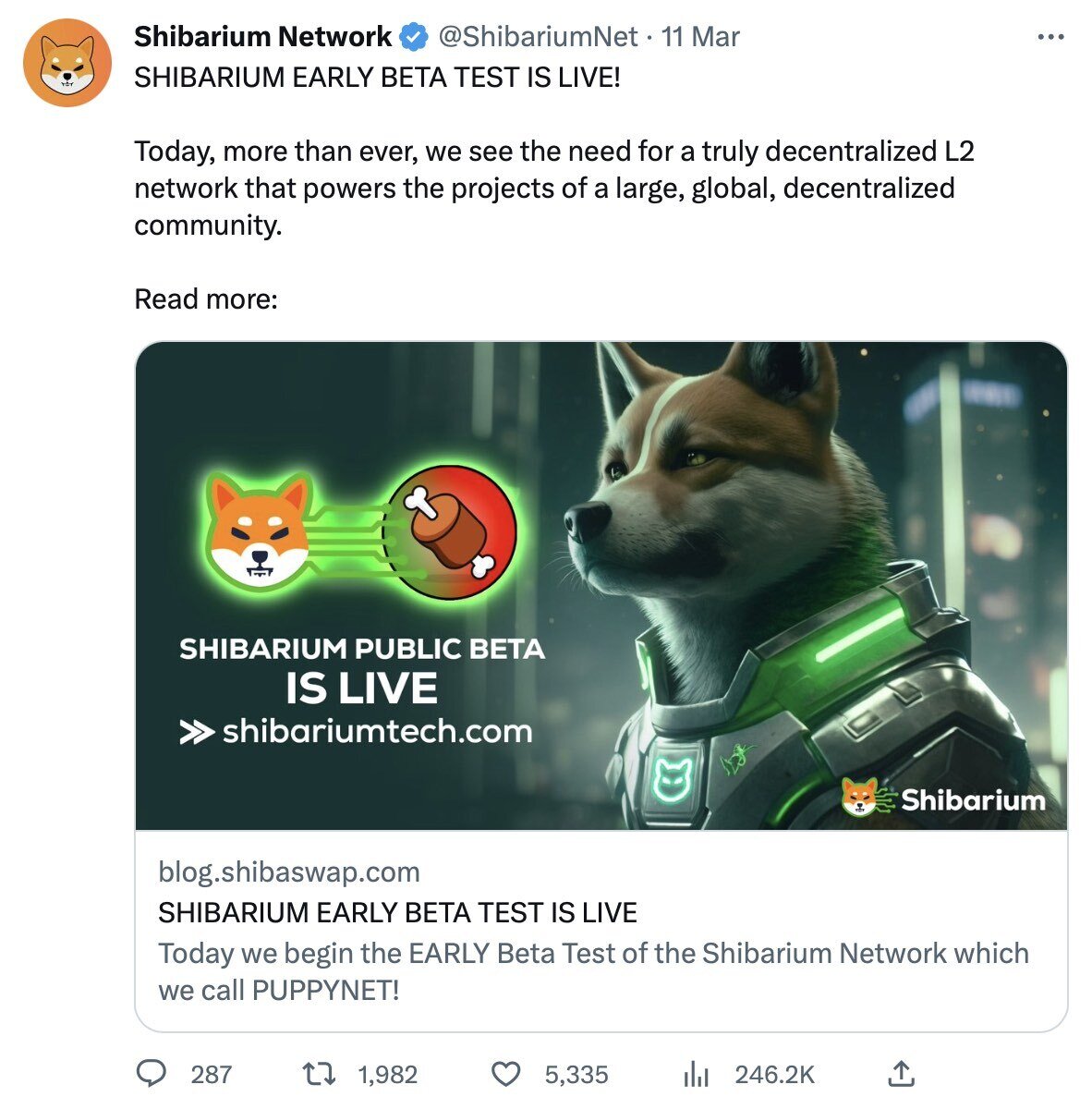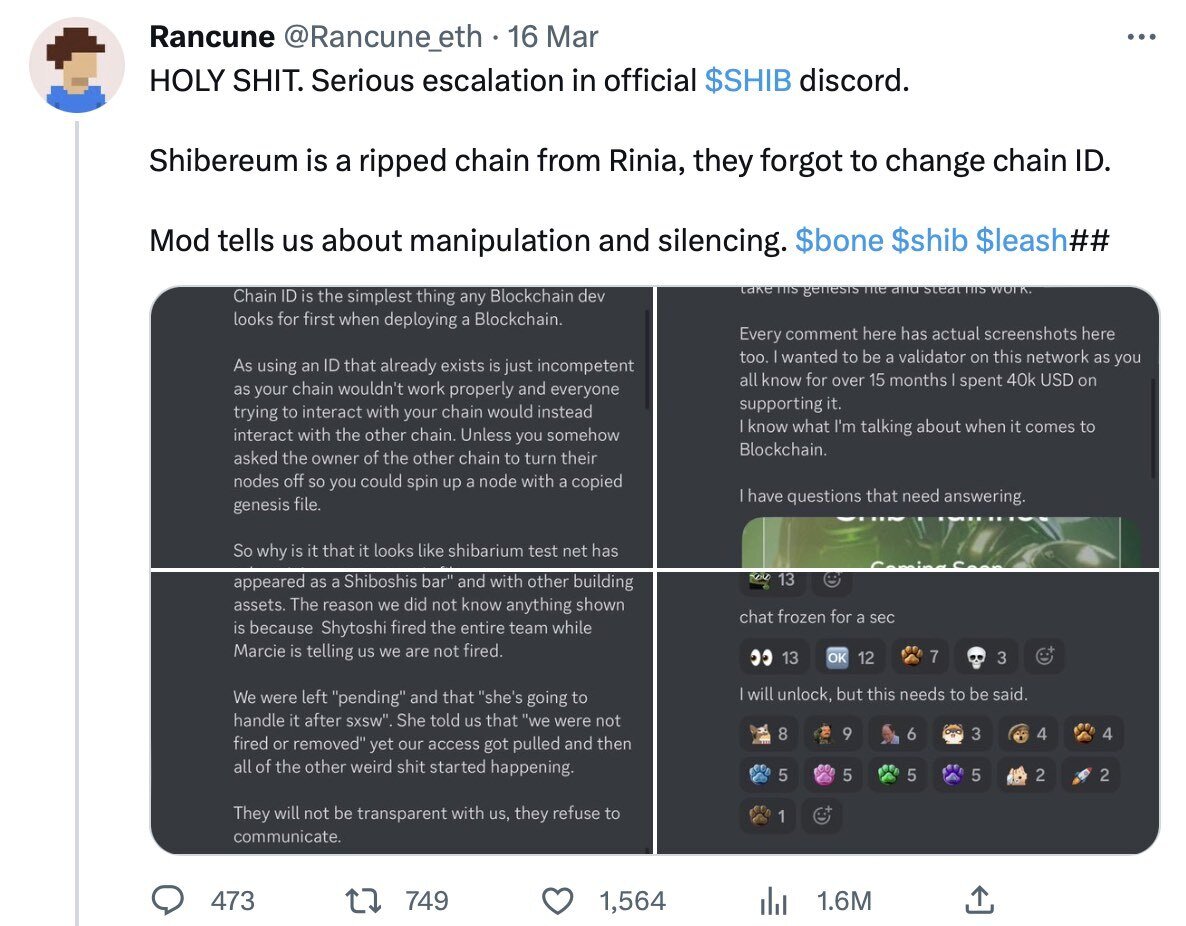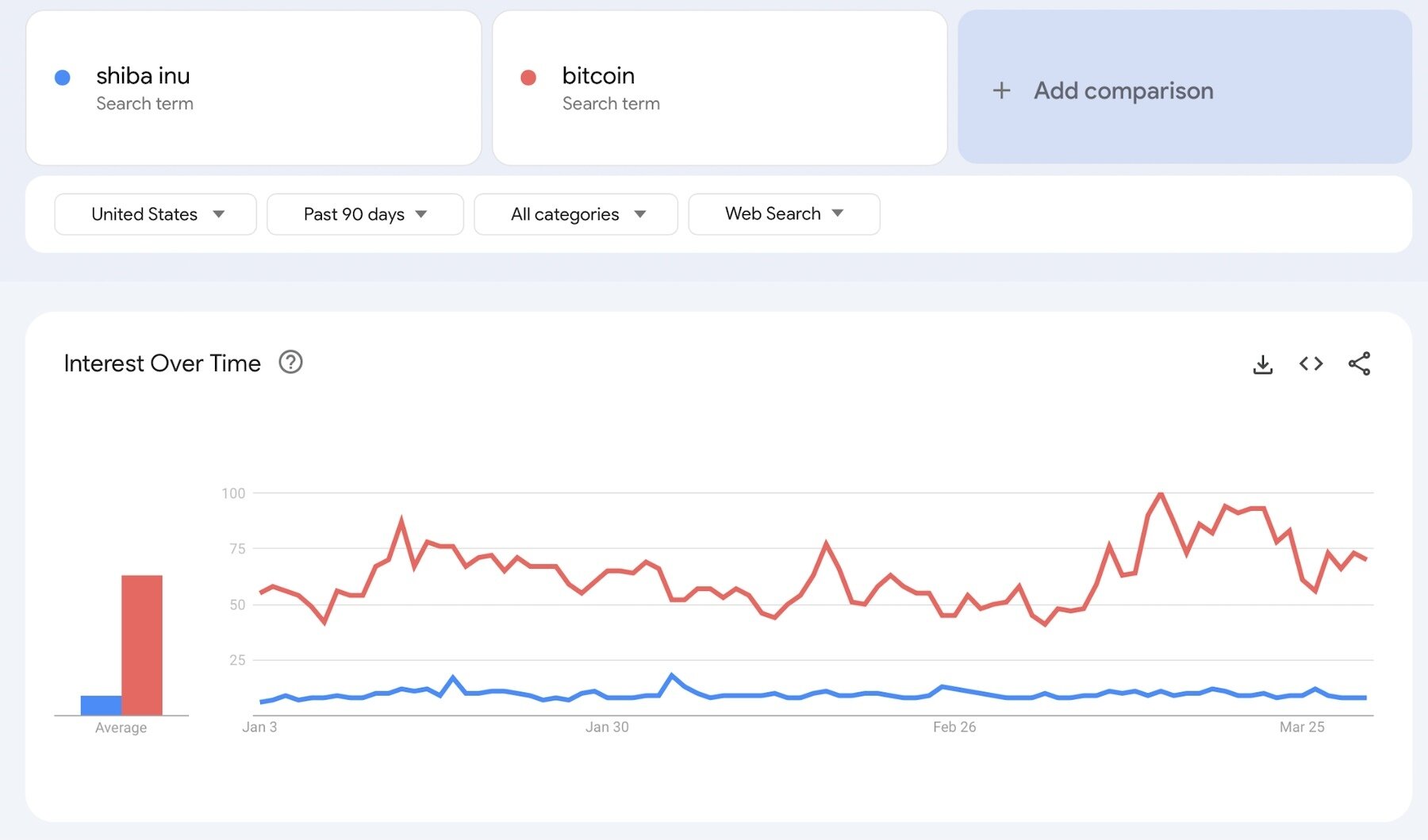- >News
- >With the Shibarium Mainnet Launch Incoming, Is SHIB Set to Become a Major Crypto?
With the Shibarium Mainnet Launch Incoming, Is SHIB Set to Become a Major Crypto?
Shiba Inu (SHIB) is one of the most popular tokens in the cryptocurrency market. While some people (e.g. Bitcoin maximalists) may continue to turn their noses up at the three-year-old meme token, it continues to attract interest from investors who hope it still has plenty of big rallies to come. Indeed, Google Trends data shows that it often ranks higher for searches than many other top-100 altcoins, while WhaleStats currently lists it as the most-traded and most held (in terms of dollar value of total holdings) ERC-20 token among big investors.
Yes, SHIB was launched back in 2020 as a kind of plagiaristic copy of Dogecoin, yet it shows no sign of disappearing (at least not yet). It even has a couple of major launches to look forward to this year, with the incoming rollout of layer-two network Shibarium promising to make using SHIB and the apps in the Shiba Inu ecosystem easier and cheaper. On top of this, there’s also the promise of SHIB: The Metaverse, a planned virtual world that will cater to individual users and businesses alike, in the process generating more demand for SHIB.
These new launches make it credible to claim that Shiba Inu’s days of being a faddish meme token are numbered. However, is there really a demand for faster Shiba Inu transactions that Shibarium will meet? And is there a similarly large demand for a Shiba Inu-branded metaverse, one that will help SHIB deliver big rallies in the future?
Shibarium Mainnet Promises to Boost Shiba Inu Ecosystem
Last month marked the beta launch of Shibarium, a long-awaited layer-two network for Shiba Inu transactions that aims to boost the growth of the meme token’s surrounding ecosystem.
Running on top of the Ethereum blockchain (which Shiba Inu currently uses), Shibarium will allow “for faster, cheaper, and more private transactions to be processed off-chain, while still relying on the security of the underlying blockchain,” as explained in the official introductory blog published in January.
Source: Twitter
Interestingly, it will also introduce a base fee burn mechanism, meaning that “all transactions on the network will have an implicit burn amount.” While this amount hasn’t yet been specified, it could result in a significant reduction in the quantity of circulating SHIB, something which in turn could boost the altcoin’s price.
However, as promising as Shibarium seems in theory, its beta launch wasn’t without incident. Firstly, it soon emerged after the beta went live that its developers had taken some of its code from another new chain (called Rinia), with some observers claiming that Shibarium’s entire source code had been stolen from the lesser known protocol.
Source: Twitter
While Shibarium’s developers quickly responded with the explanation that only the layer-two’s chain ID (and not its entire code) had been taken from Rinia, the mini-scandal still had the effect of muting SHIB’s response to the beta launch. Indeed, SHIB’s price fell when the above rumors emerged on March 16, while the coin has risen by only 7% since the beta launched on March 11, with questions about Shibarium’s code still lingering. By contrast, bitcoin (BTC) and ethereum (ETC) are up by 40% and 30%, respectively, within the same timeframe.
More broadly, it’s also worth pointing out that there’s really only one significant app in the Shiba Inu ecosystem at the moment. This is decentralized exchange ShibaSwap, which currently has a 24-hour trading volume of between $2.5 million and $2.8 million (depending on whether you ask CoinGecko or CoinMarketCap). This makes it only the 54th-biggest DEX in the market, while it would rank at around 95th if it were a centralized spot exchange.
In other words, there currently isn’t much of a Shiba Inu ecosystem at the moment, and it’s entirely arguable that this has very little to do with the lack of a Shiba Inu-focused layer-two. Why can’t apps that want to make use of SHIB in some way or be Shiba Inu-themed use one of the existing (and proven) layer-twos, such as Polygon, Arbitrum and Optimism?
This skepticism aside, Shibarium’s official launchpad claims that “over 7,000” applications have been sent to it by projects wanting to build apps on the layer-two network. Of course, such claims haven’t been provided with anything in the way of evidence or independent corroboration, yet data does suggest that contributors are at least using Shibarium’s testnet. As such, there remains a chance that over time it will lead to a growth in apps, and by extension, a growth in the SHIB price.
A Pinch of Salt
That there’s interest in building on Shibarium is supported by the above-mentioned fact that Shiba Inu remains a popular cryptocurrency among the general public and cryptocurrency community. That said, it needs to be remembered that Shiba Inu may not be as popular as some would have you believe.
Recently, a few crypto outlets ran with the news that the coin was the most Googled token in the United States in March, a claim which was regurgitated widely on Twitter. This is completely false, as revealed by a cursory look at the actual data. For instance, Shiba Inu is nowhere near as popular as Bitcoin, as the chart below makes abundantly clear.
Source: Twitter
Yes, Shiba Inu occasionally ranks higher than other altcoins (such as Dogecoin and Ethereum), but it’s only marginally higher, and not always. As such, claims of its apparent popularity and/or success need to be viewed with some degree of caution. Indeed, given that this is crypto, they could be little more than attempts to pump the coin’s price.
Nonetheless, Shiba Inu does have other things to look forward to beyond Shibarium, including SHIB: The Metaverse. Details of this Shiba Inu-themed digital world are fairly scarce, with its official announcement (published in March 2022) stating that it will consist of 100,595 plots of land, which will be divided into four districts (Growth, Defense, Technology, and Currencies). Most of these pieces of land will be purchasable as NFTs, while they will also be graded into four tiers based on desirability and utility.
That’s about it. SHIB: The Metaverse will use SHIB, LEASH and BONE as its native tokens, something which will boost demand for each of these native Shiba Inu tokens. Not much beyond this has been heard since last year, although it did update its official website and release an alpha preview of one of its areas.
As with Shibarium (which it will run on), SHIB: The Metaverse is superficially a good idea, yet it remains to be seen whether it can really take off. Despite much hype, no metaverse has yet really gained any real traction, making it an unproven concept (at least for now). Meta has poured billions into its own vision of the metaverse, with only losses to show for it. And despite SHIB: The Metaverse’s aspirations of becoming “the future of entertainment, business, and gaming,” are real businesses going to be queuing up to sign partnerships with it?
At this point, it’s hard to imagine they will, just as it’s hard to imagine Shiba Inu escaping its reputation as ‘just a meme token’ anytime soon. A cynic would even argue that the planned launches of Shibarium and SHIB: The Metaverse are just a way to keep the Shiba Inu hype train ticking over for a little while longer.
Still, even with these misgivings, Shiba Inu still continues to attract attention and interest from various parts of the cryptocurrency community and general public. So while it does seem unlikely that it will become a major, serious cryptocurrency in the near future, it would be unwise to rule such a scenario out completely.




